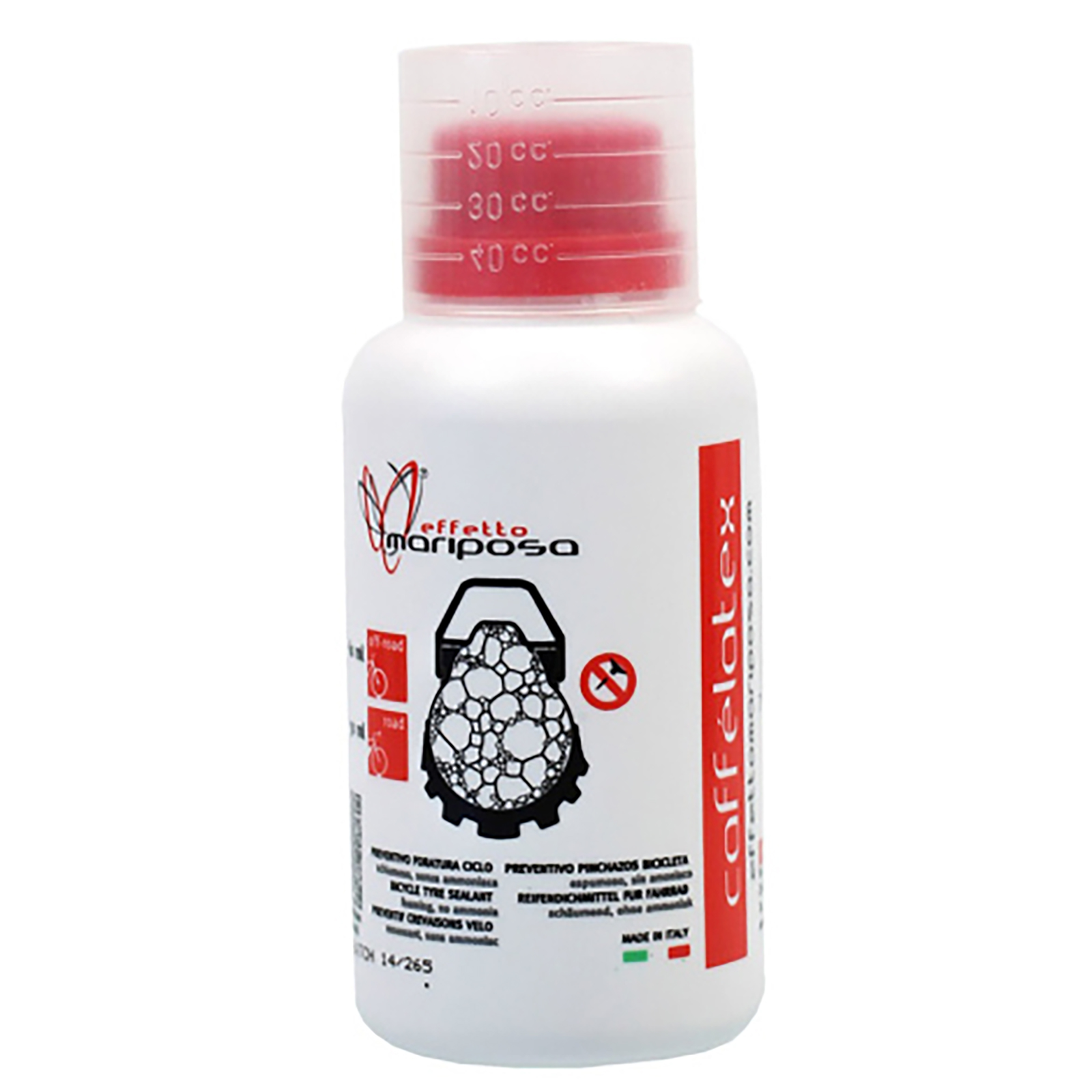Best tubeless tire sealant for bikes – expert choice for MTB, gravel and road tires
Buying the best tubeless tire sealant means less time fixing flat tires and more time riding your bike. Find out everything you need to know to pick the right sealant for your riding needs
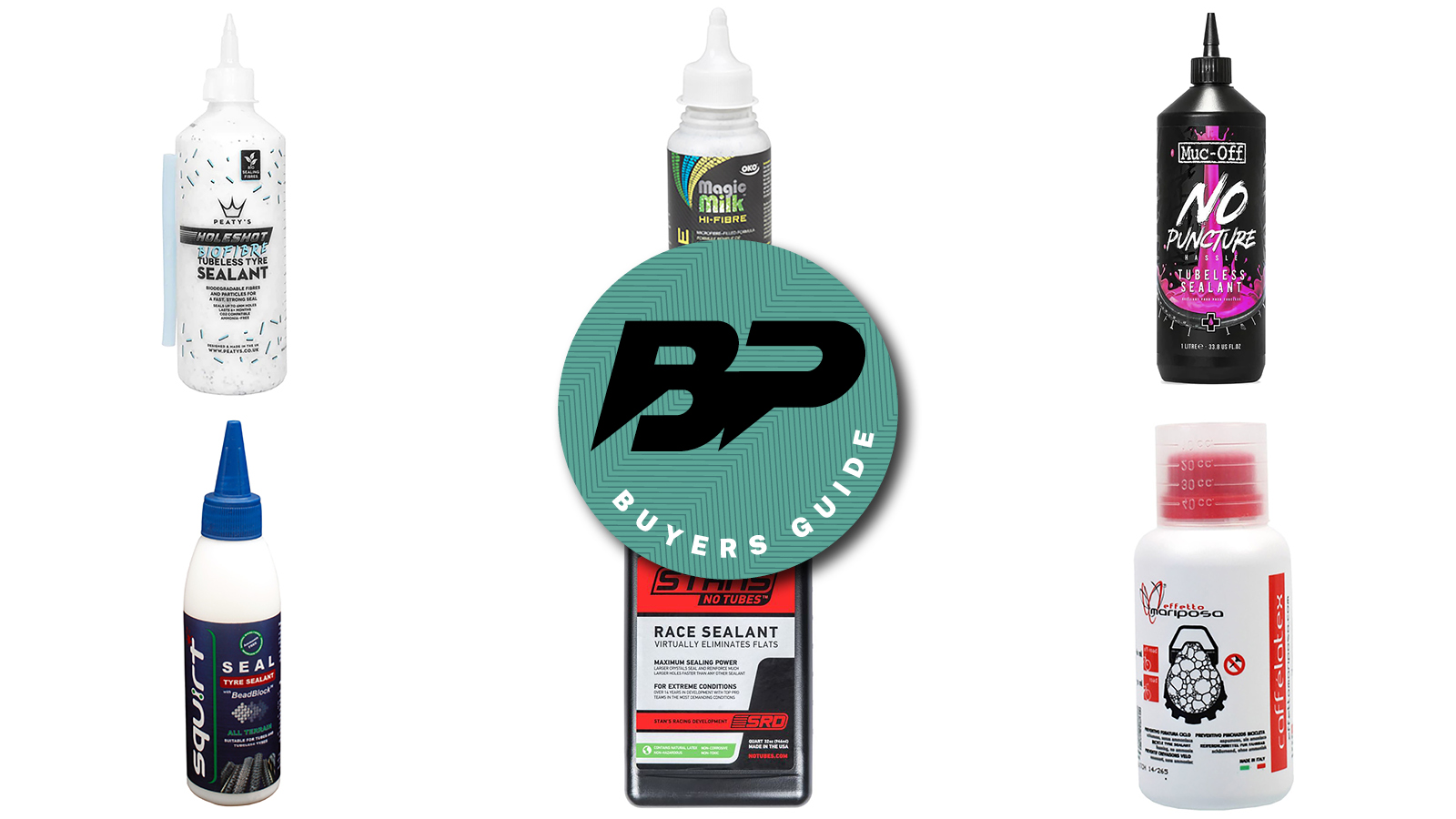
The best tubeless tire sealant for bikes plug punctures and cuts in mountain bike tires before you even realize you’ve got them, which means more time riding and less time wrestling with muddy tires at the side of the trail or road. However, self-sealing punctures aren't the only advantage to using a tubeless setup. Tubeless allows much lower tire pressures, which means more grip and control on rowdy descents without the risk of pinch flats or snakebites so you can ride faster.
While you often hear horror stories of messy tubeless home conversion attempts, using one of the best bike floor pumps, setting up a tubeless tire to a tubeless rim is actually very straightforward these days.
In real life and workshop conditions, we’ve tested a whole load of the best tubeless tire sealants to see which works best, and which aren’t worth bothering with at all. Peaty's Holeshot Biofibre Tubeless Tire Sealant is our top pick, and OKO Magic Milk Hi-Fibre is our budget choice.
Don't know where to start when looking for tubeless sealant? For everything you need to know, check out our guide to how to buy the best tubeless tire sealant for bikes at the bottom of this article. And if you're after valves too, see our guide to the best tubeless tire valves.
Best tubeless tire sealant for bikes
Why trust BikePerfect
The top 6
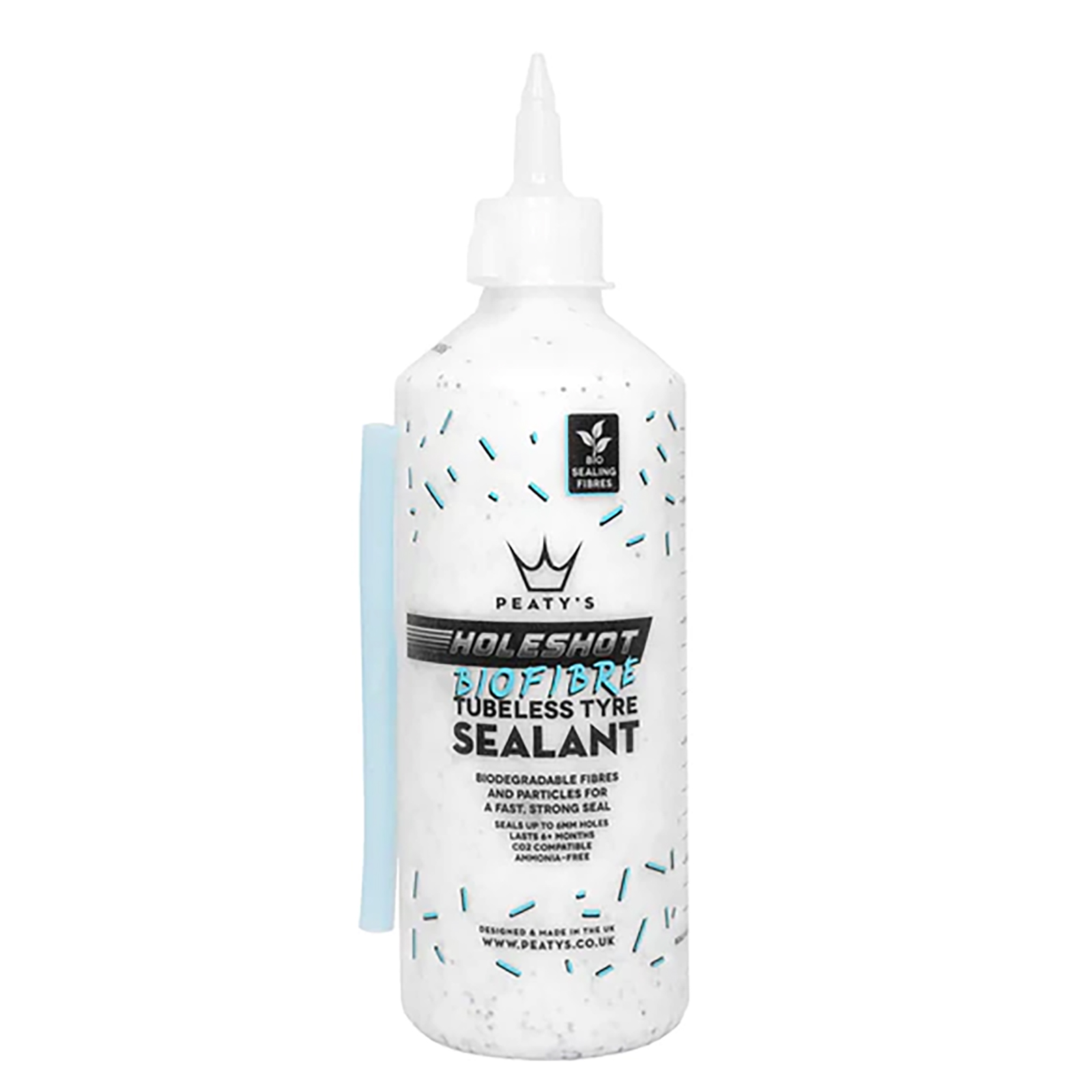
Best overall
An outstanding sealant, it tackles holes up to 8mm, lasts well, is easy to clean up and biodegradable.
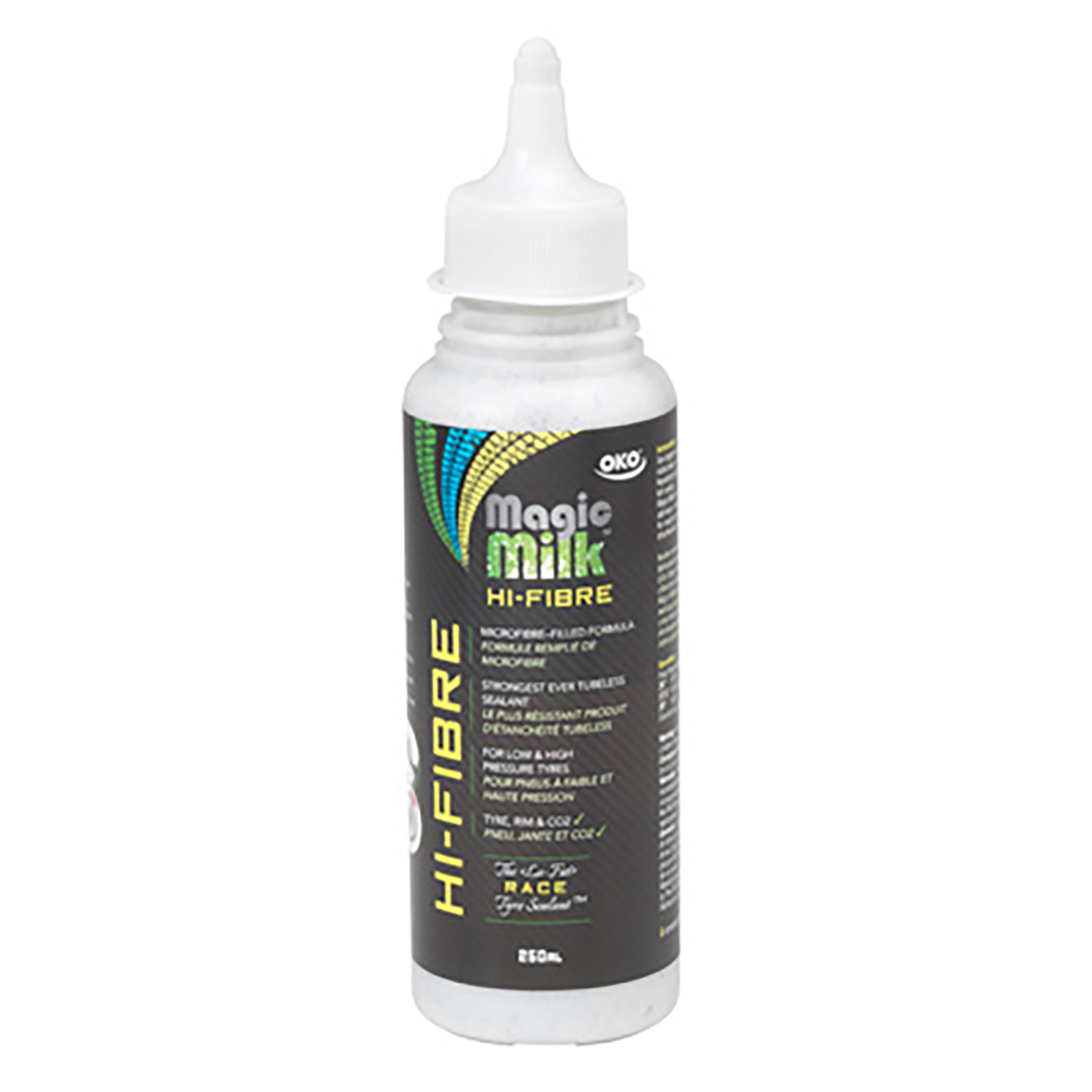
Best value
A low-cost, non-allergic latex-based sealant that’s great for fixing small to medium-sized holes.
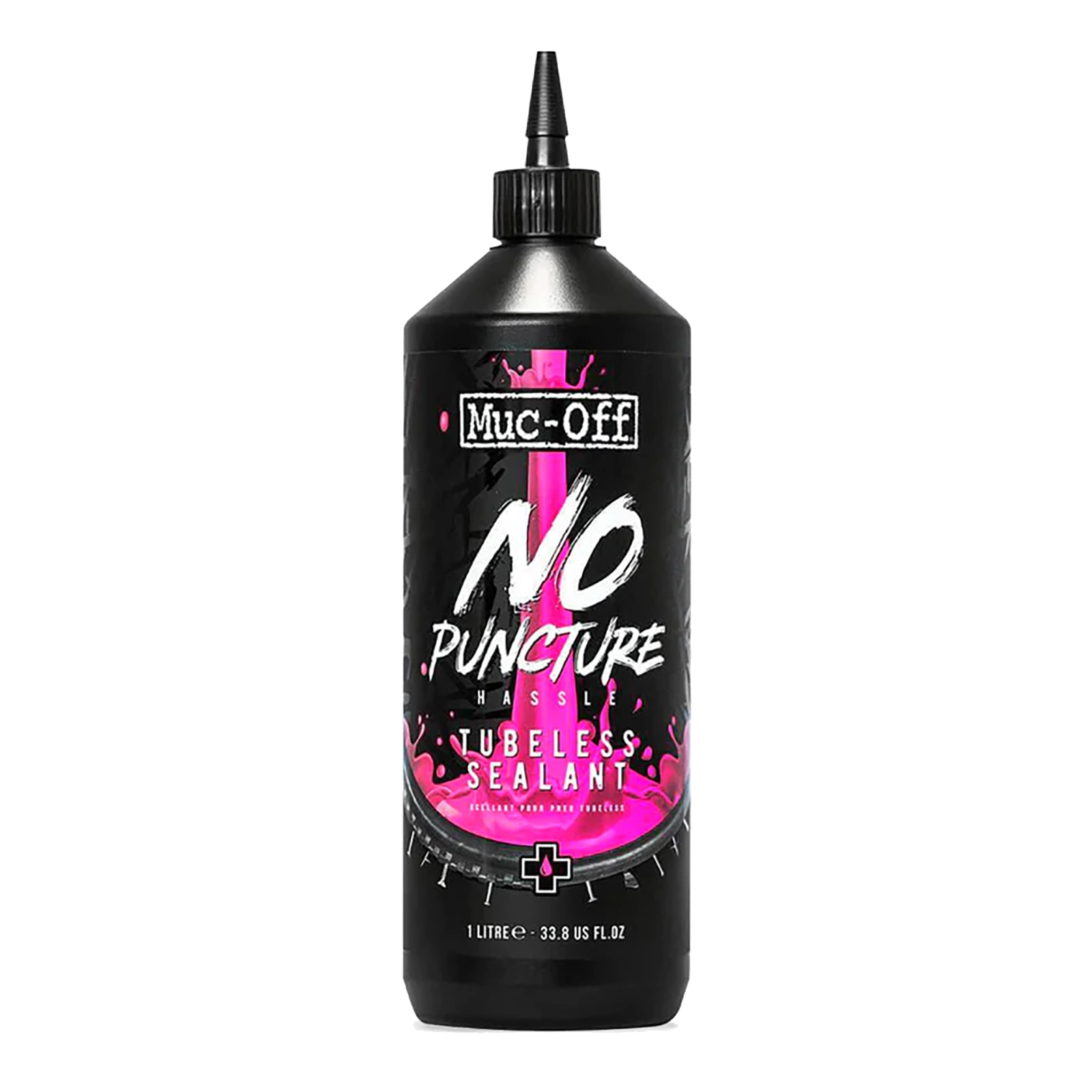
Best all-rounder
An excellent all-round sealant that’s fast reacting and shines under UV to help you spot holes.
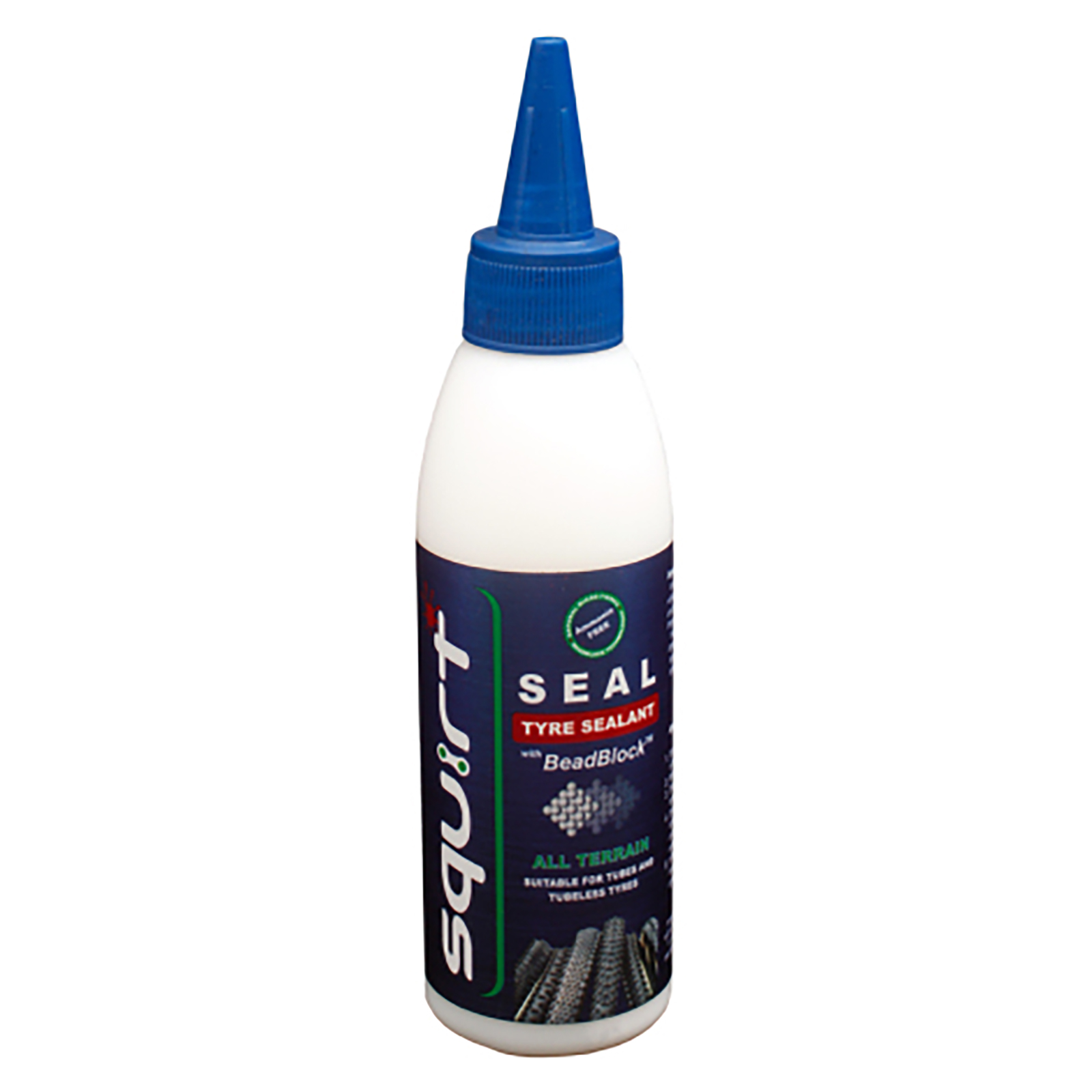
Best race-proven
Popular on the MTB marathon race circuit, Squirt is fast-acting and eco-friendly.
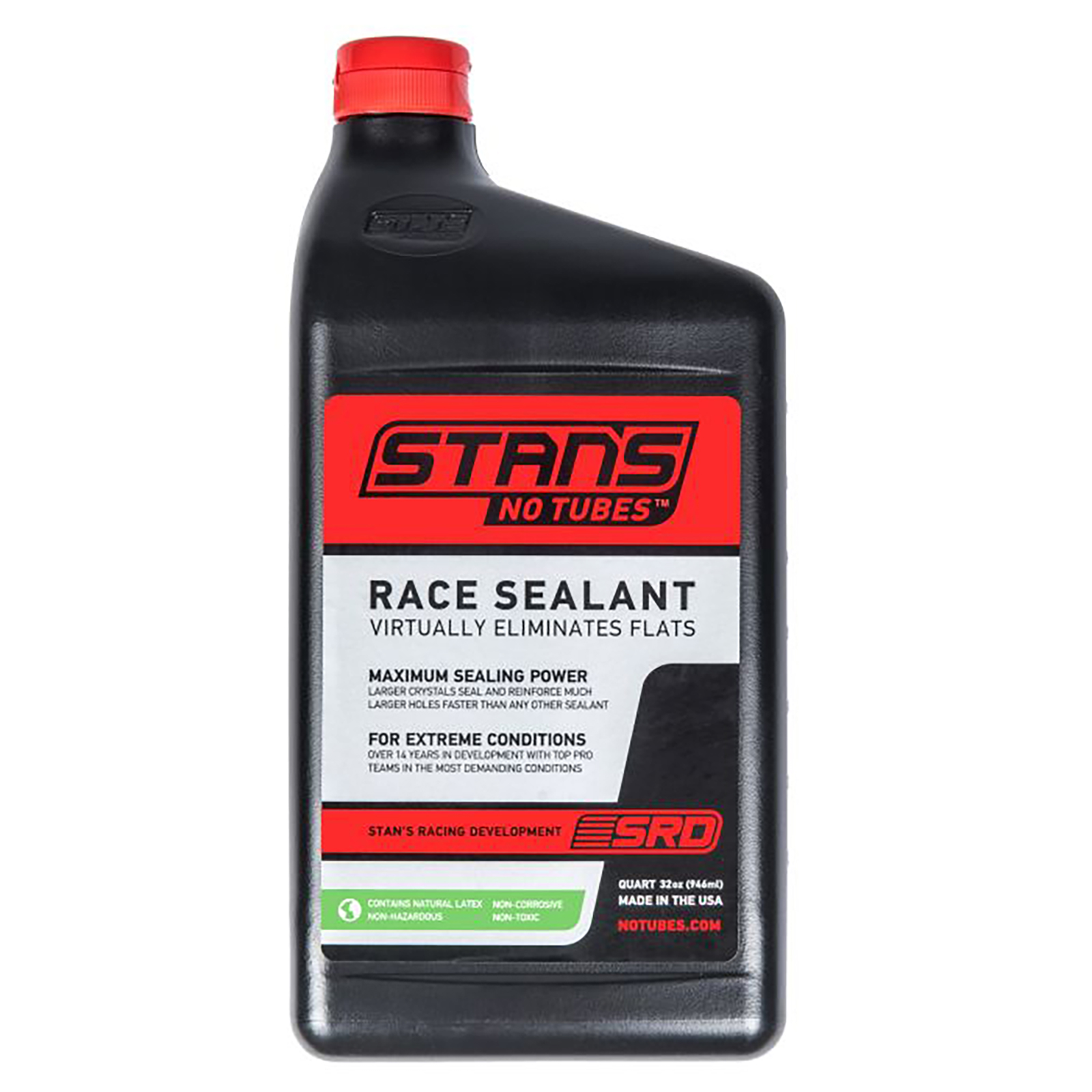
Best for large holes
Stan’s Race mix is a good choice for plugging larger holes and tolerates a wide temperature range.
In depth
1. Best overall
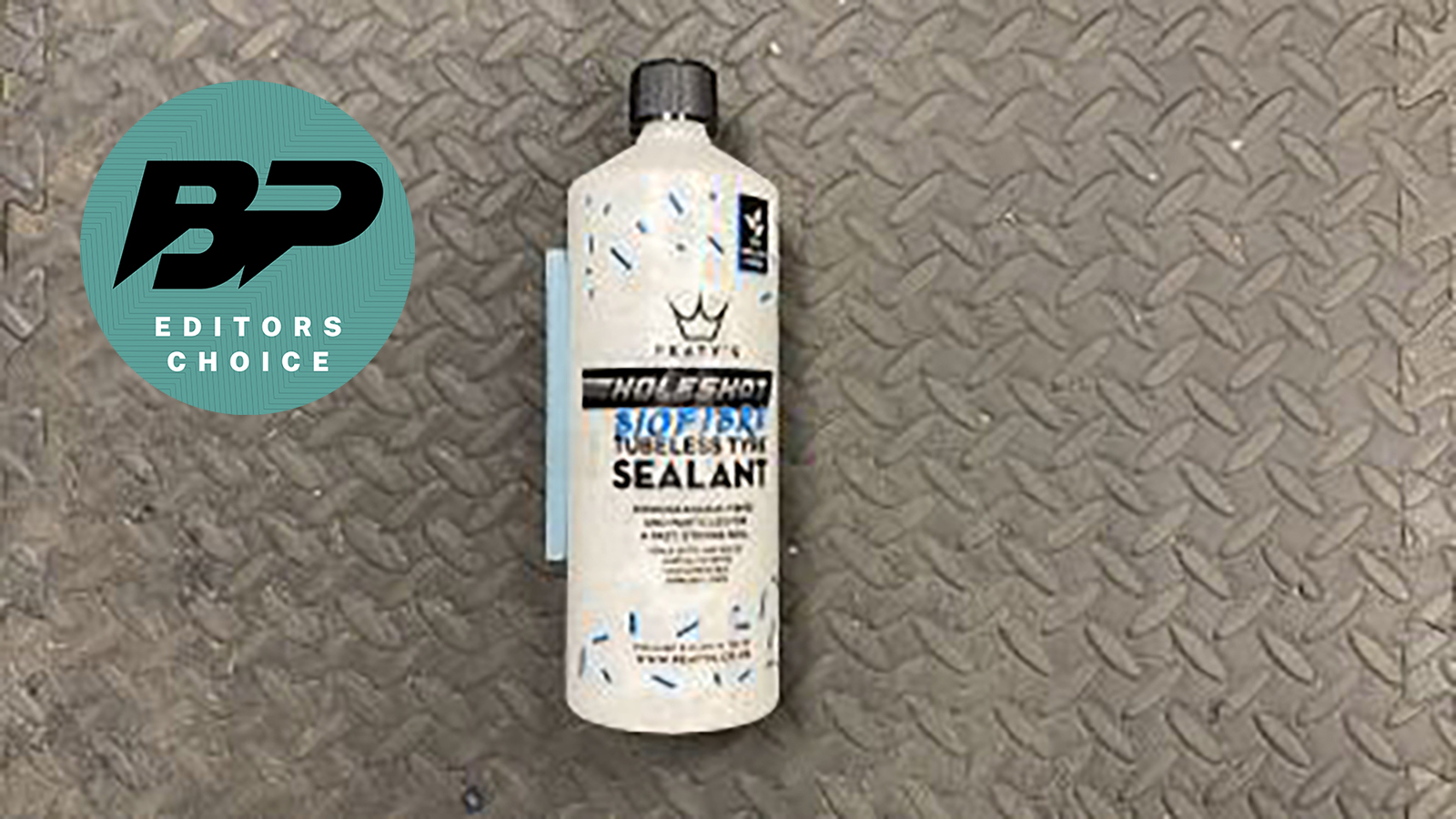
Specifications
Reasons to buy
Reasons to avoid
Peaty’s has spent the last three years working through a whole range of recipes to find the best sealing, easiest to use, biodegradable mix. The new sealant uses a water-based latex with no ammonia so it doesn’t smell like a urinal and can be rinsed out easily when you change tires. It includes biodegradable starch platelets, as well as cellulose fibers which bind together quickly to seal bigger holes.
The mix does still contains glitter (made from hardwood cellulose, not plastic), however, there are no plastic fibers in it and it does mean it’s super easy to see when you’ve shaken the sealant into an even mix ready to load into the tire. We found it mixes really easily with none of the big lumps of residue you find in the bottom of many sealant bottles. The reusable ‘trail pouch’ has a plastic nozzle and the bottles have rubber tubes that slide snugly over the valve to stop spillage.
Once in, we found it lubes tire beads nicely to help with inflation. It coats carcasses really well too, stopping sidewall bubbling on tires that have been too porous to use with other sealants. Although Peaty’s lists life at six months, tires we loaded up a good eight months ago still have plenty of mobile mix in them.
Over months of testing we’ve run the mix in various brands of MTB tire, as well as gravel and road tires up to 80psi, and it’s the best all-round sealant we’ve used by a consistently repeatable margin, particularly when it comes to healing serious wounds. It’s a reasonable price, easy to clean up, lasts well from freezing to mid-40 degrees (that’s the extent of our test range, Peaty’s says -15º to 50º) and won’t unduly damage the planet.
For more, see our full Peaty’s Holeshot Biofibre Tubeless Tire Sealant review.
2. Best value
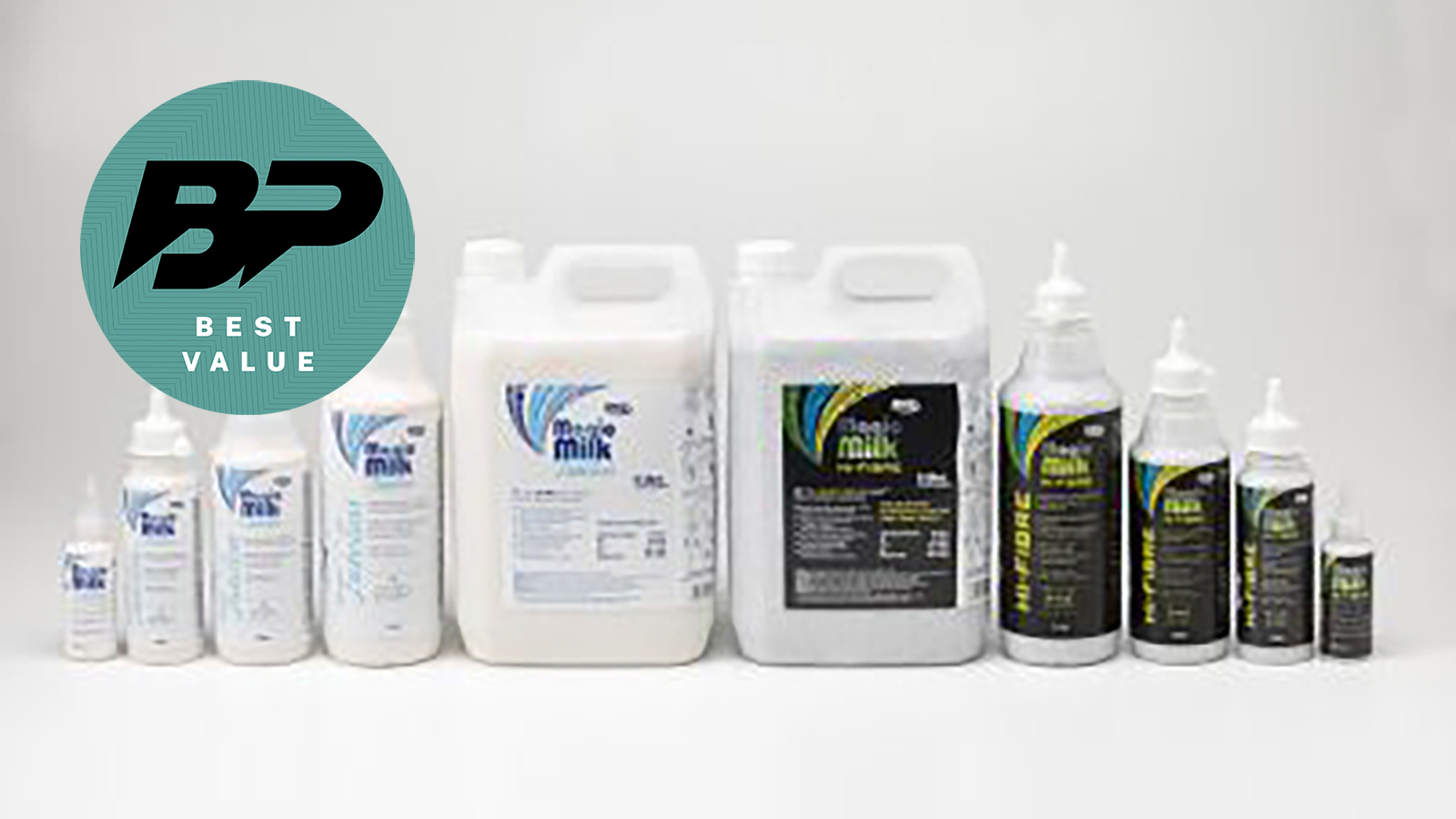
OKO Magic Milk Hi-Fibre
Specifications
Reasons to buy
Reasons to avoid
If this was a tire sealant test for motorcyclists, farmers, HGV drivers or earthmover specialists, OKO would be the most recognized name here, but it’s not even on the radar for most bike riders. We even know some riders who use their tractor mix diluted down for their bikes because they didn’t know there were bike-specific versions. That’s a bit rude considering the UK firm was one of the pioneers of liquid tire sealants for heavy-duty vehicles back in the 70s. Even at the full retail price, its Magic Milk sealant is half the price of some better-known brands but with online shops regularly discounting massively, it’s often even more of a bargain.
Low-cost doesn’t mean low performance either. The standard Magic Milk formula is a synthetic ammonia-free, non-allergic latex mix that’s great for coating porous tires and fast fixing small to medium-sized holes. It’s happy with a wide range of temperatures and while it coats tires well it doesn’t ‘booger up’ either, so you just need to top up after a few months. As the name suggests Magic Milk Hi-Fibre is loaded with microfibers for a faster seal of bigger holes, and it’s the same price as the normal mixture so MTBers aren’t paying a premium.
3. Best all-round performance
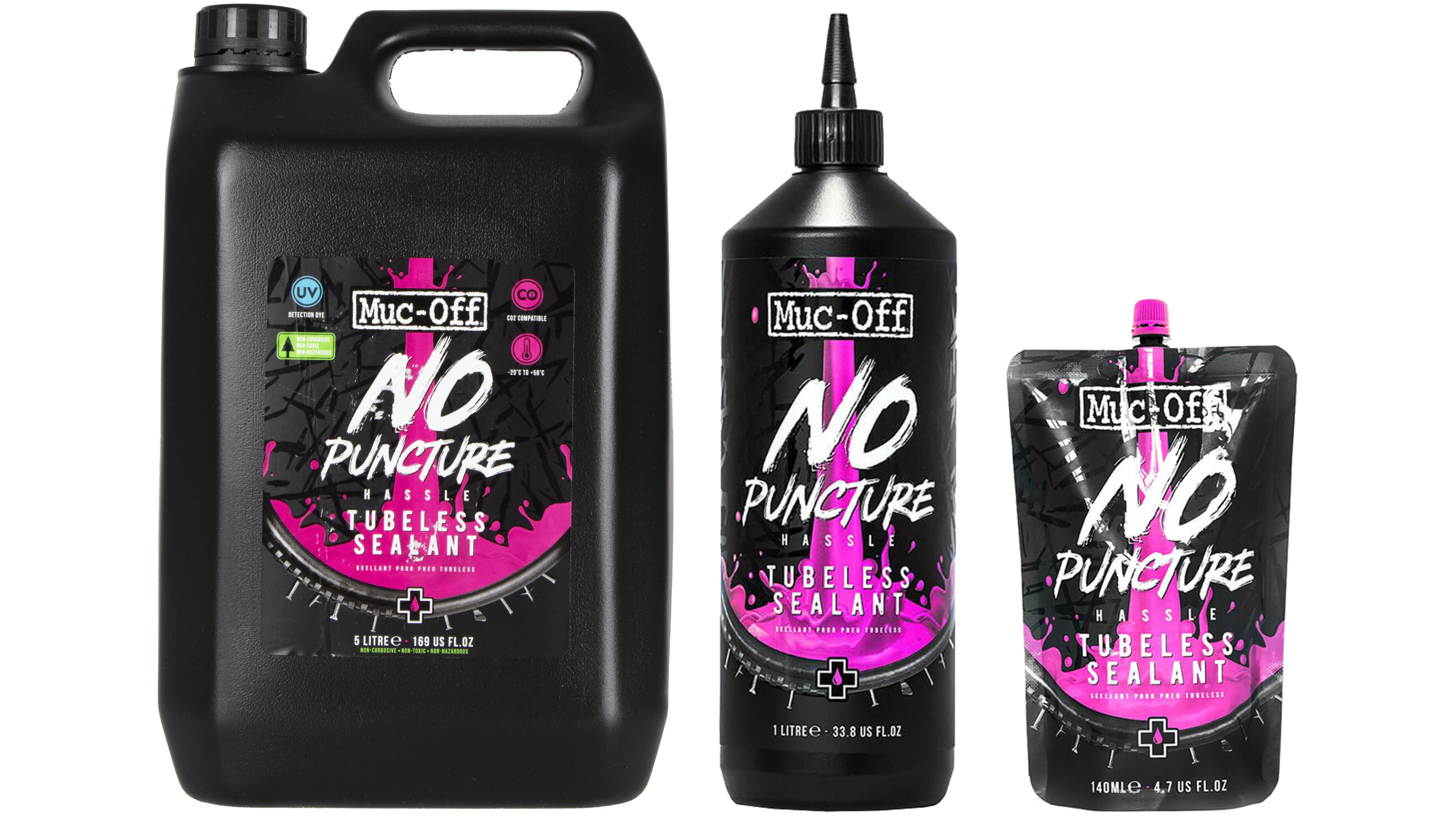
Muc-Off No Puncture Hassle tubeless sealant
Specifications
Reasons to buy
Reasons to avoid
Muc-Off’s signature pink sealant is on the pricey side but it’s worth the investment as it works brilliantly in any situation. Both cost and performance are less surprising when you find out the brand has been trying various recipes for six years with every tire brand and riding style around, and it even built an oven for testing mixes in different temperatures.
The result is a great blend of fast-reacting mobility, so it’s worked great for road commuting and even on big sidewall splits on off-road bikes. We even had a fractured and bulged carbon MTB rim seal so fast we rode it home without even needing to top up the pressure.
The sealant also shines under a UV light (you get a UV torch with the $14.99/£10.99 sealant kit and bigger 1L and 5L bottles) to help you spot holes that you didn’t notice at the time but may want to plug for longer-term security. It also shows micro leaks in porous ‘tubeless ready’ sidewalls so you know where to apply further sealant. It lasts a long time in all weather conditions without forming boogers, it’s fine with CO2 inflation and it even smells pretty nice.
4. Best rapid action

Squirt SEAL tire sealant
Specifications
Reasons to buy
Reasons to avoid
Dubbed by many testers as the 'white gold' of tire sealants, Squirt's SEAL tire mixture is fast becoming the go-to remedy for mountain bikers all over the world – especially those who traverse the hostile and often unforgiving trails of marathon stage racing and need fast-acting puncture protection.
Squirt's SEAL sealant is not limited to mountain bike use exclusively but can also be used for road and gravel tires, too. Furthermore, the sealant is compatible with both tubed and tubeless applications and fosters effective puncture-sealing properties.
Available in three bottle sizes – 150ml, 1L and 5L – Squirt caters for all disciplines as well as ensuring each of its products is green and safe for the environment. That said, this particular sealant boasts minimal to zero bioaccumulation.
5. Best for plugging larger holes
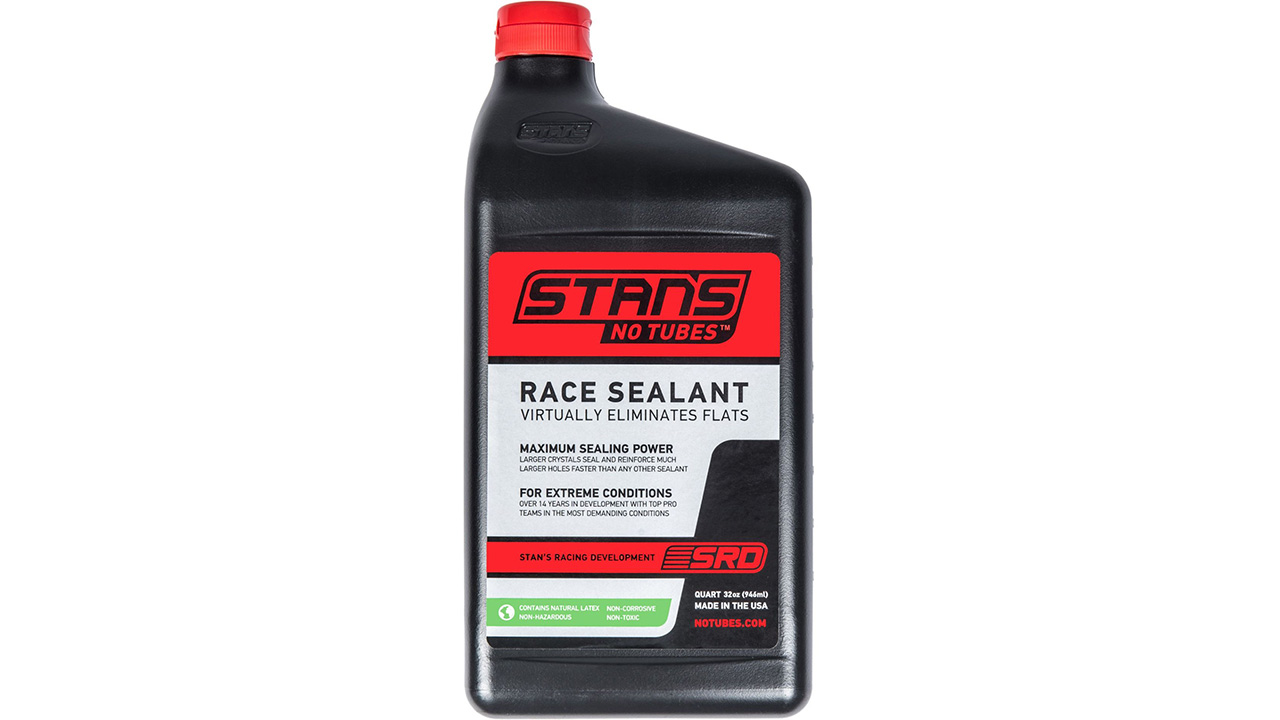
Stan’s No Tubes Race sealant
Specifications
Reasons to buy
Reasons to avoid
Stan’s No Tubes can be credited with getting the whole tubeless setup ball rolling with its cunning conversion kits at a time when most tubeless tire and rim systems were a heavy, numb-riding headache. You can still get its original latex-based sealant too, and if you’re only looking to coat a tire to seal it and heal small holes fast – e.g. on the road – then the lightweight mix performs well. It’s also available in smaller-sized bottles as well. The Race mix contains bigger fibers and crystals in the same base mixture and works significantly better to plug the bigger holes and splits that come with rough off-road play.
Either mix is tolerant of a wide temperature range and you’ll normally be more than halfway through the year before it starts to form ‘Stanimal’ clumps. It’s not so happy when used with CO2 cartridges though and it smells a bit acrid, too.
6. Best foam sealant
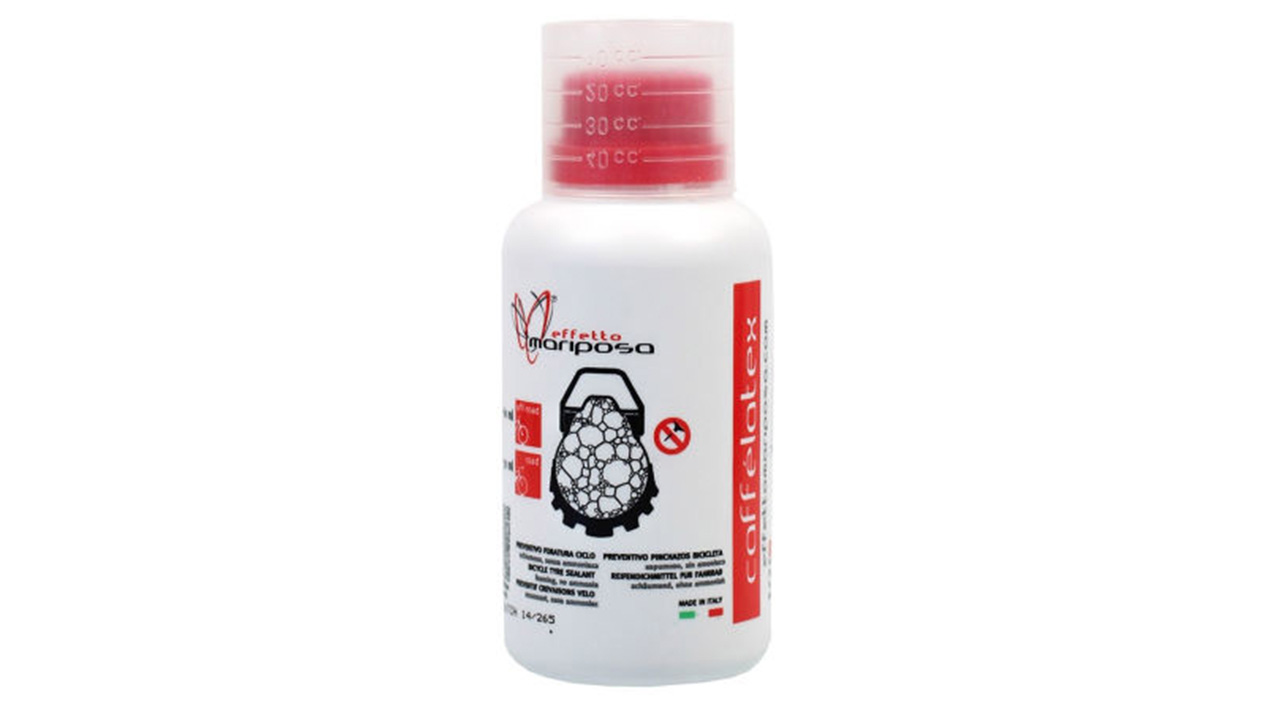
Effetto Caffelatex
Specifications
Reasons to buy
Reasons to avoid
Effetto Mariposa takes a suitably Italian approach to solving punctures with its Caffelatex sealant. Not only does it have a light coffee-colored tinge but the very fluid, lightweight mix starts to foam when forced through holes, creating a distinctive ‘crema’ as it seals. Not only is this entertaining in a slightly rabid way, but it also seals small to intermediate holes really rapidly and holds high pressures fairly reliably afterward. Add a reasonable lifespan and decent value pricing in the larger bottles and that makes it great for road use. The basic mix struggles to plug bigger holes and hold them shut once you start thumping about post-puncture though, so Effetto makes a ‘Vitamina CL’ additive supplement for plugging bigger holes more effectively.
7. Best environmental
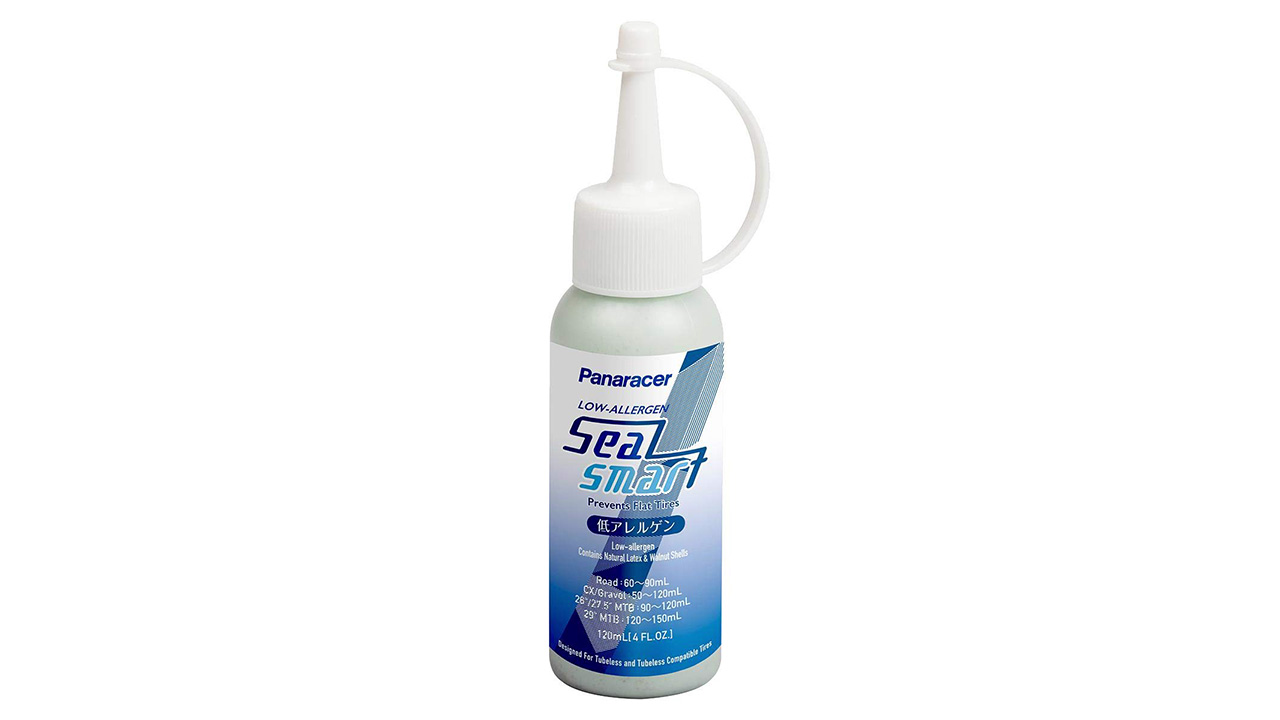
Panaracer SealSmart sealant
Specifications
Reasons to buy
Reasons to avoid
Japanese tire company Panaracer has taken a while to get into the sealant business but its 2019 introduction was completely nuts. Okay, not completely nuts as the main carrier liquid is a natural latex rubber, but the gritty, hole-blocking ingredient is crushed walnut shells. That makes it the most natural sealant available and – presuming you don’t have a nut allergy – it’s one of the kindest mixes for skin and bike if it gets spilled. It works pretty well too, clogging small to medium-sized holes quickly and holding pressure well afterward once the walnuts are wadded together. With a bit of help tapping the tire round to flood the area, it’ll handle big holes and sizeable slashes.
8. Best road and gravel
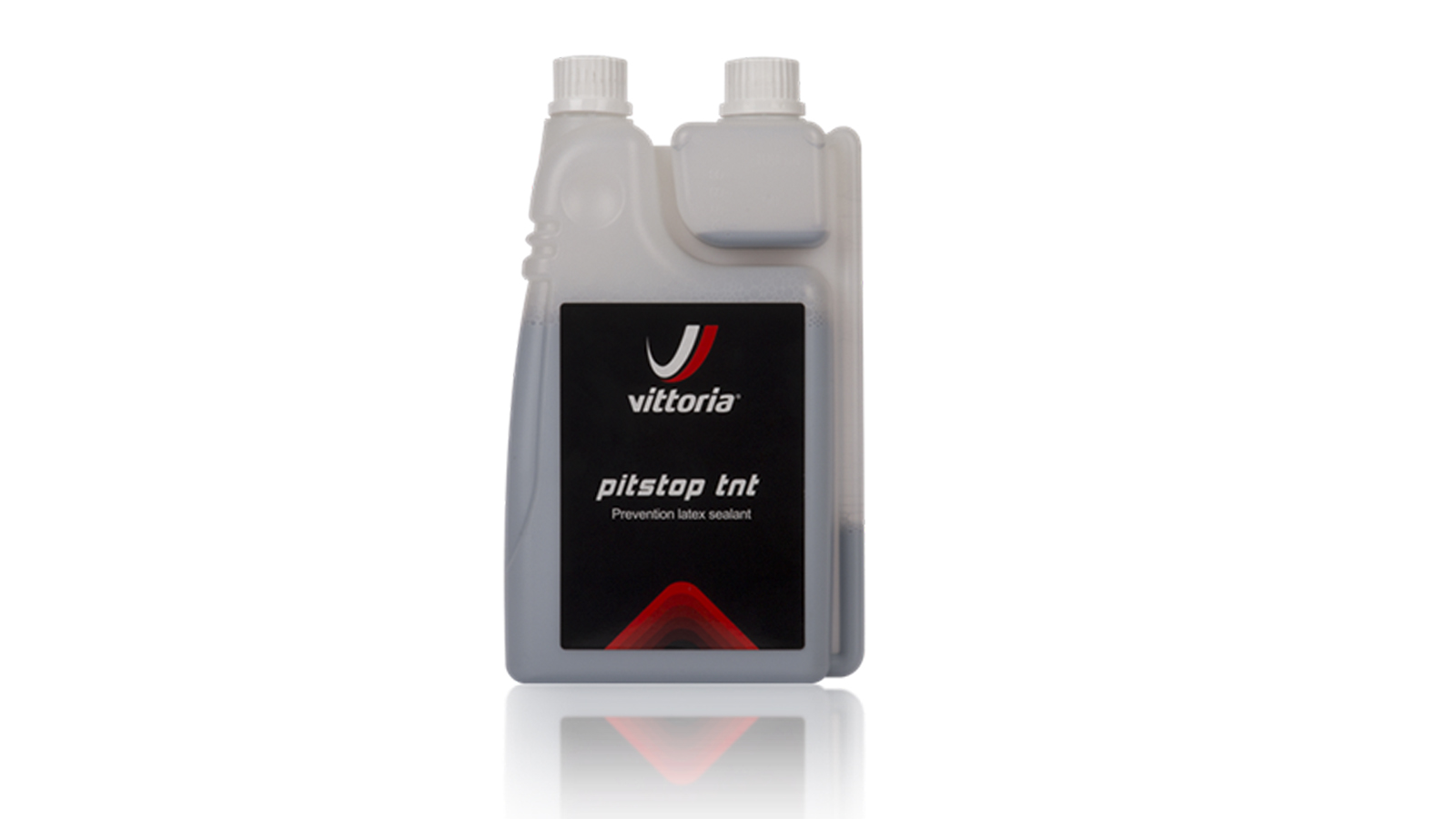
Vittoria Pit Stop TNT latex sealant
Specifications
Reasons to buy
Reasons to avoid
Vittoria’s Pit Stop TNT (or the EVO version) is worth a glance if you tend to get small holes that need fixing fast before you lose a lot of pressure. It’s a very liquid mixture so it swills around the tire easily, helping with mounting, sealing porous carcasses and getting to any holes fast.
The latex mix seals very quickly too, so there’s minimal pressure lost or spray on your frame, and it generally stays plugged reliably afterward. It’s not as effective at plugging larger holes and slashes/knob tears though, so it’s less suitable for aggressive off-road users. It’s also more expensive than more consistent, versatile mixes like original Stan’s, and while the double-headed dispenser bottle arrangement looks ingenious it's more awkward to use in practice than a separate scoop.
9. Best budget road and gravel
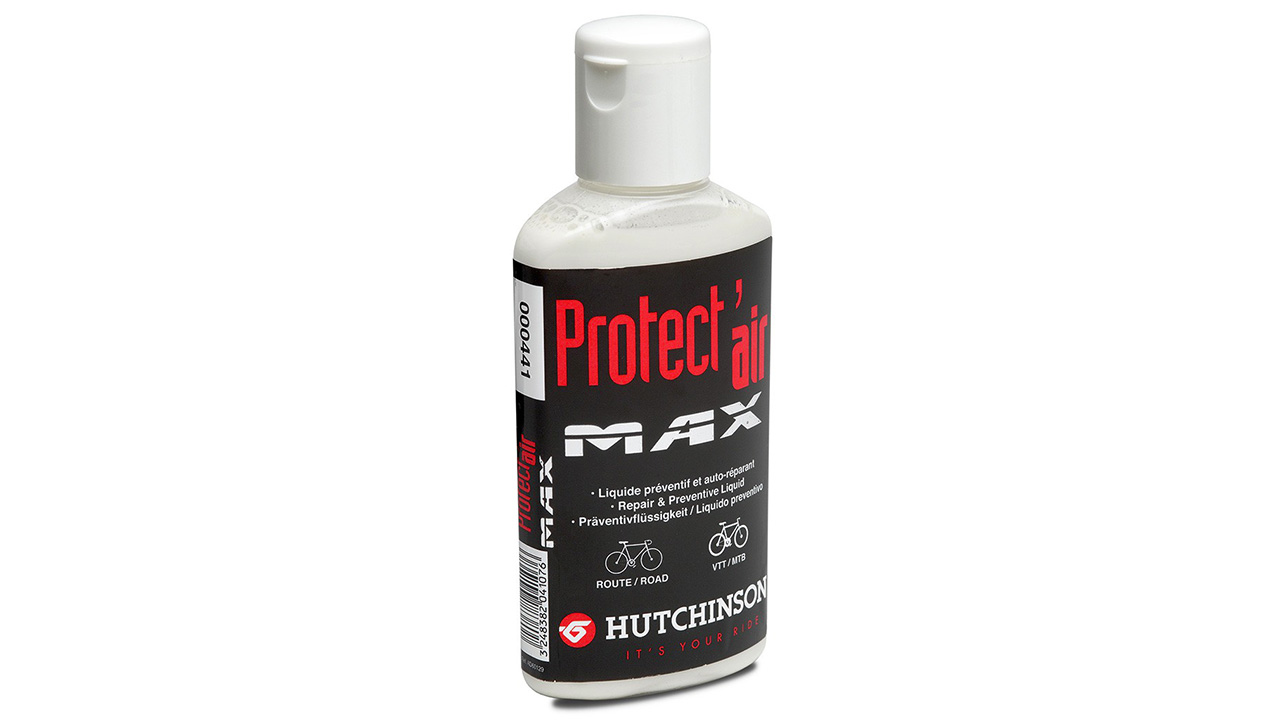
Hutchinson Protect’ Air Max
Specifications
Reasons to buy
Reasons to avoid
Hutchinson was one of the pioneers of tubeless and tubeless-ready tires and was into the sealant game early too. It’s a very fluid, lightweight mix designed to coat porous tubeless-ready tires fast, and it’s slippery enough to help installation too. That all makes it good for road and gravel/cyclocross use, especially as it’s really well priced for a shop-supplied – rather than direct buy – product. Where it struggles is plugging and holding larger holes and slashes reliably, so you’re going to need to add some DIY bits or another thicker, latex-based sealant if you want it to handle more traumatic environments.
10. Best for smaller holes

Bontrager TLR sealant
Specifications
Reasons to buy
Reasons to avoid
Another early adopter of TubeLess Ready (TLR) tire tech, Bontrager’s lightweight milk is also typical of early generation mixes. The rise of tubeless road tires has given it a second lease of life as it rushes to small holes and rips quickly and generally seals them well. It also coats tires well and eases installation which is particularly useful if you’re using Bontrager’s super tight rims and tires. It stays mobile at a wide range of temperatures for a long time too, and it’s ammonia-free so it’s relatively skin/paint/metal friendly. The sealant represents decent value compared to its rivals, although it only comes in a quart bottle.
If you want it to cope with more gaping damage, you’re going to need some glitter (plastic-free of course) or something similar mixed into the recipe, and Bontrager’s recommended dosages (e.g. 60ml for a 29er) are definitely on the low side for long-term, multiple puncture protection.
What to consider when choosing the best tubeless tire sealant
How does tubeless tire sealant work?
Sealant is designed to do exactly what it says on the bottle: seal small holes in your tires to stop the air from escaping. The base liquid is generally water-based (glycol or propylene) with added cellulose thickeners or a latex-derived mixture. These stay liquid in the tire so they can swill round to the puncture site easily but solidify when they’re forced through a small hole under pressure. The exact composition of the sealant defines how liquid it is and how it reacts when it gets to the puncture in terms of sealing speed and the size of the hole it can plug.
For example, Specialized’s RapidAir is designed for sealing small holes very quickly in a road riding scenario while Orange Seal’s Endurance blend is slower moving but can block bigger holes, making it more suitable for MTB use.
What type of formula is best?
While the base liquid mix makes a difference most sealants also include extra ‘bits’ in them to help plug the hole faster. Depending on the brand these can be given all kinds of fancy names including; particulate, additives, crystals, polymers, fibers etc, but as a general rule the bigger the bits, the bigger the hole the sealant can plug. More liquid sealants can get to the hole faster though so if you’ve not got much air to spare, a more liquid mix might be better.
How much tire sealant should you use?
As tubeless sealant seems expensive and you’re adding weight to your bike it’s tempting not to put much in. You need to remember that you’re effectively replacing an inner tube that can weigh from 100g (road) to 250g (large MTB) and cost around $20 / £12 depending on how shrewd your shopping is, so you’re generally still winning on weight and cost with tubeless. The bottom line is that the more sealant there is in the tire the more there is to plug multiple holes or keep trying to plug one big one. While different manufacturers suggest different amounts we find a relatively simple formula based on twice the ml of sealant to the mm width of the tire (e.g. 50ml in 25mm tire, 80ml in a 40mm tire 120mm in a 60mm / 2.4in tire) is enough to coat the tire and leave some left for plugging holes. If you know you’re heading into cactus country or broken glass backroads on a regular basis, use more. Also, larger diameter tires will obviously need more than smaller tires.
How long does tubeless tire sealant last?
You’ll only get the intended mixture of bits and liquid in your tires if you make sure you shake the bottle really well before loading up the tire. Otherwise, the contents will settle in storage and the first tires you fill from a big bottle will only have largely useless liquid in them. That means you’ll be left with a load of sludge in the base of the bottle, not in your tires where it needs to be.
More recent mixes tend to stay in solution better inside your tires and sealants will always work and last better in regularly used setups than ones left to stand. However, some recipes (particularly older, simpler ones) can coagulate and lump together in ‘boogers’ or ‘Stanimals,’ making the mix much less effective at sealing holes. Really big lumps can even be felt in the rotation of lightweight tires.
Different brands also quote wide-ranging lifespans for their tires from OKO’s optimistic ‘lifetime’ to Orange Seal’s butterfly-style 'month and a bit'. Extremes of temperature can affect different mixes too so it’s worth checking if you’re heading to the Arctic or Arabia. Be careful using CO2 cartridges with some mixes as the freezing temperatures of the released gas can kill the mix.
That means while it’s a pain, unseating tires to check the state of your mix is definitely a good idea if you want your tubeless setup to work the way it should.
Is there anything else I should know?
While we’ve listed different sealants in our puncture beating round-up we actually used several more in our hunt for the best. In the case of Schwalbe’s Doc Blue, it’s basically the same as Stan’s original No Tubes sealant (it’s made by Stan’s) but more expensive. Continental’s RevoSealant is very liquid so works okay for road tires, but struggles with bigger holes and is expensive.
You need to remember that if you can’t find your favorite, any of these recipes can be altered to suit your needs. Thick liquids can be diluted with more latex or a lighter solution, and thin ones can be bulked up with a thicker brand or DIY additives like glitter (though plastic glitter is terrible for the environment). Be sure to mix latex-based sealants with latex and water-based sealants with water though or they won’t work well together.

Guy Kesteven has been working on Bike Perfect since its launch in 2019. He started writing and testing for bike mags in 1996. Since then he’s written several million words about several thousand test bikes and a ridiculous amount of riding gear. He’s also penned a handful of bike-related books and he reviews MTBs over on YouTube.
Current rides: Cervelo ZFS-5, Specialized Chisel, custom Nicolai enduro tandem, Landescape/Swallow custom gravel tandem
Height: 180cm
Weight: 69kg
- Rich OwenEditor, BikePerfect
